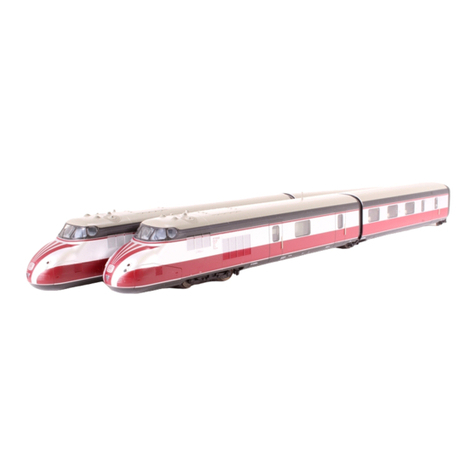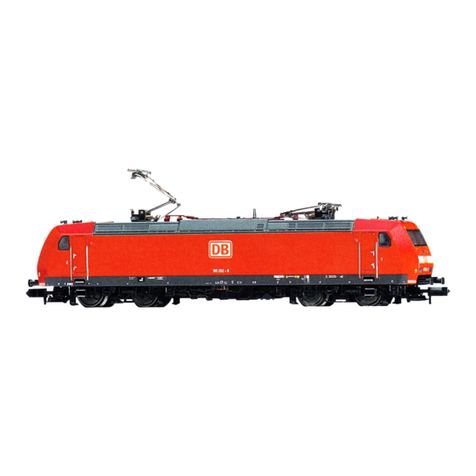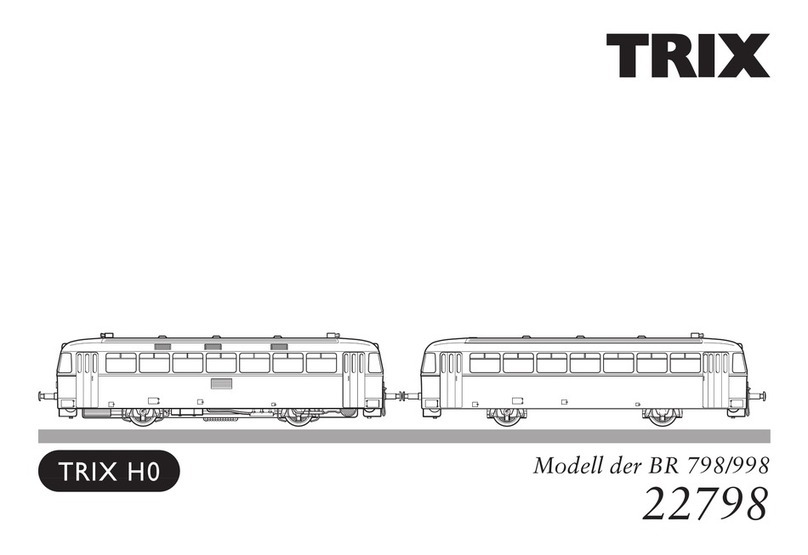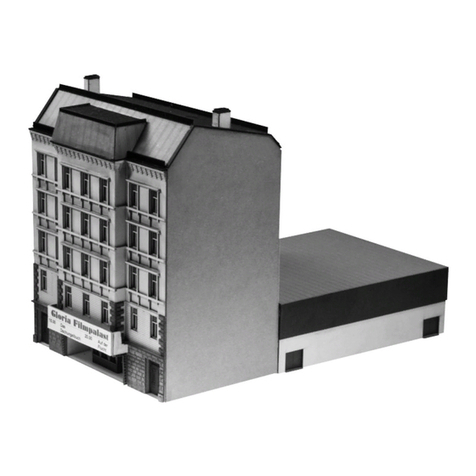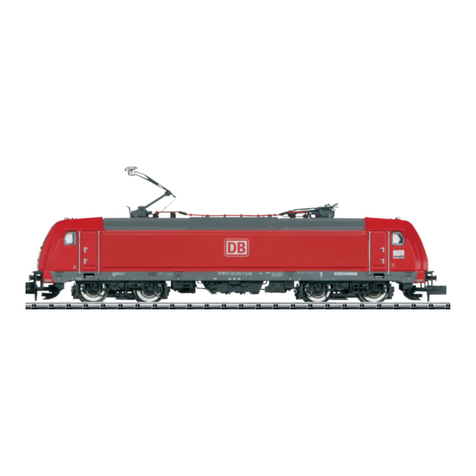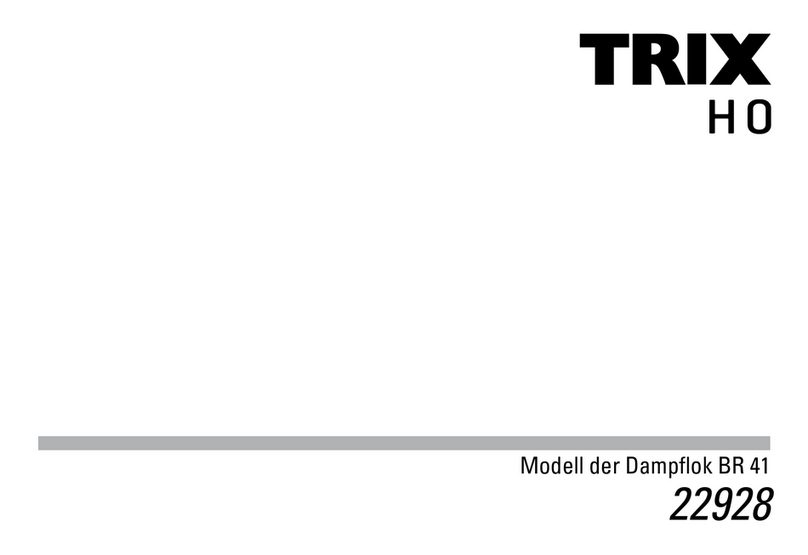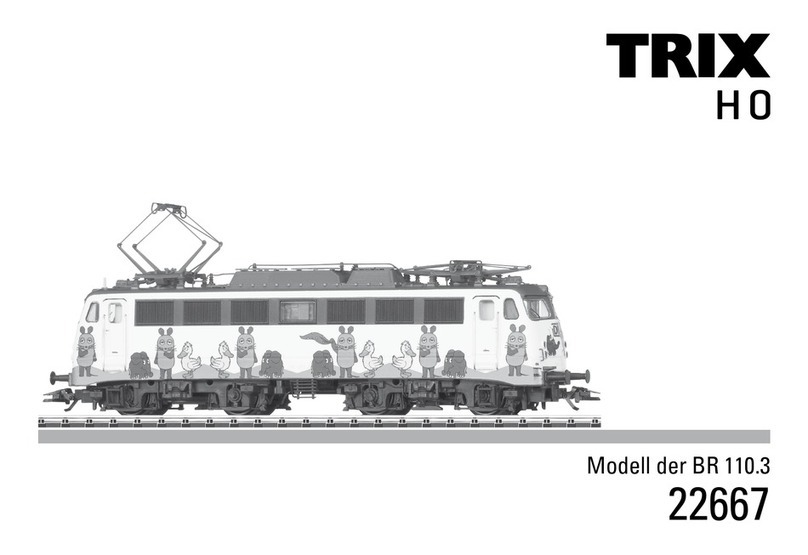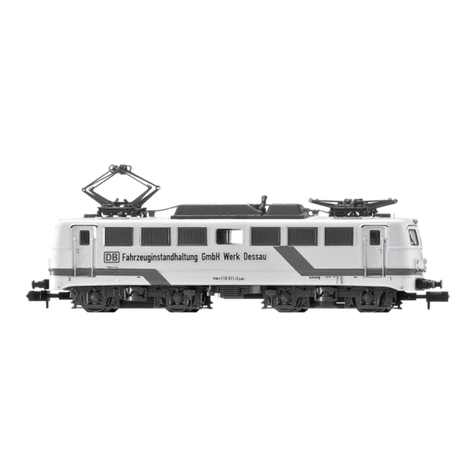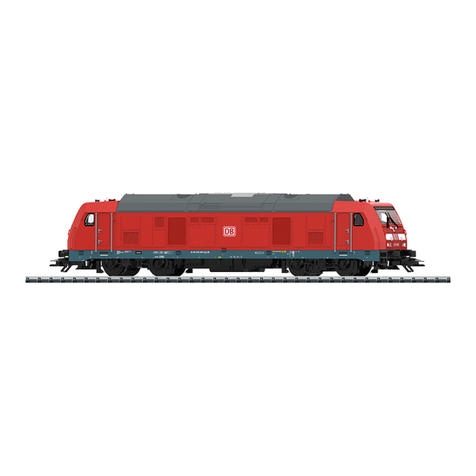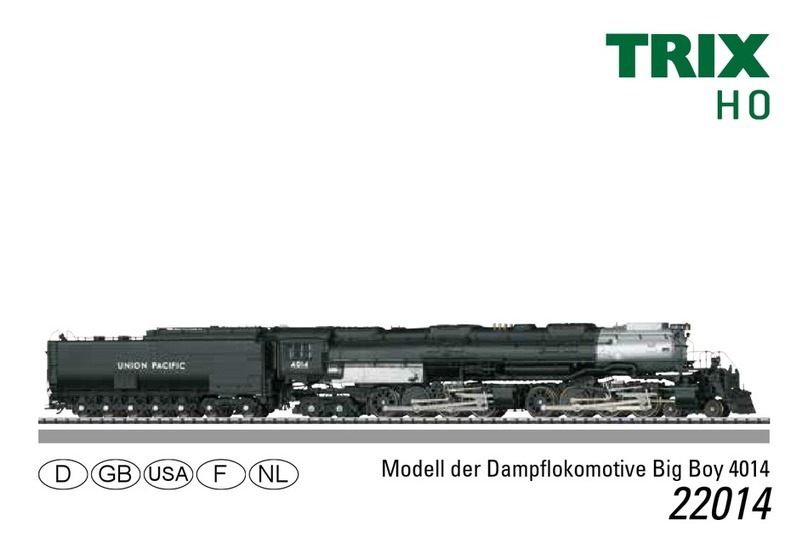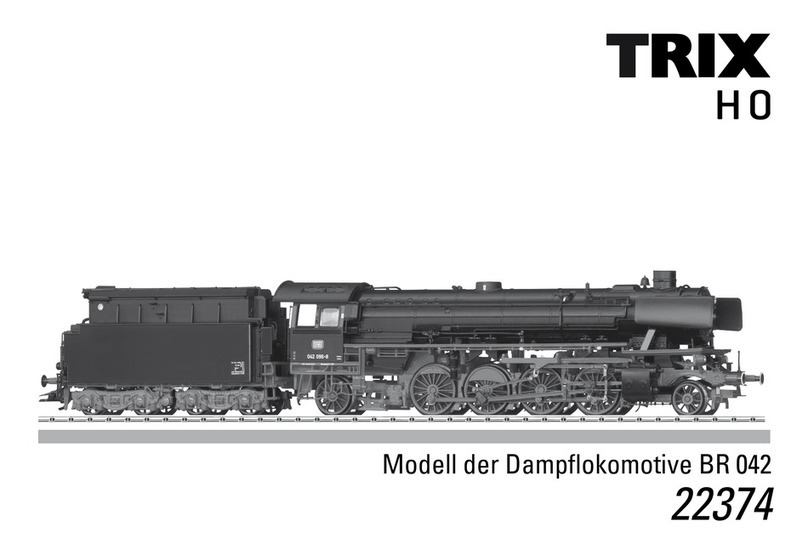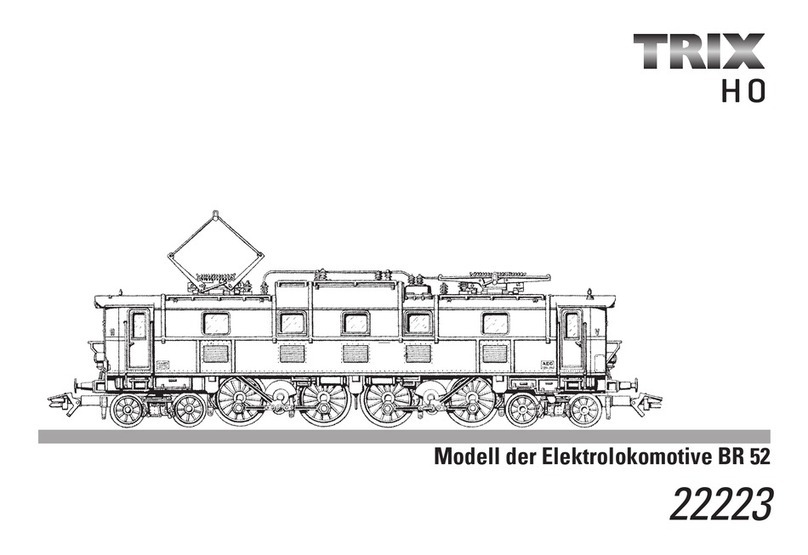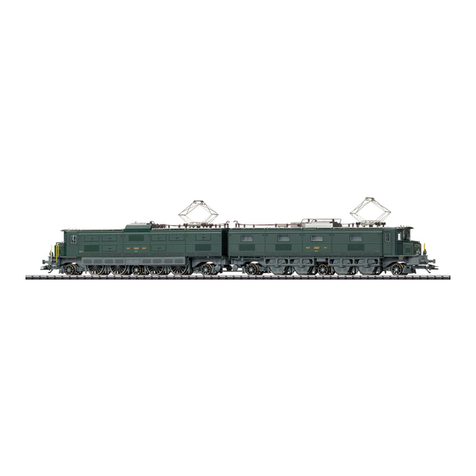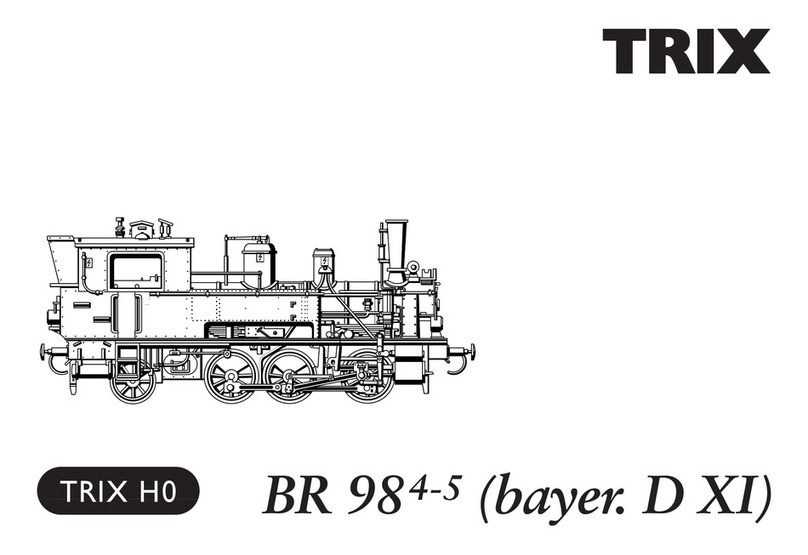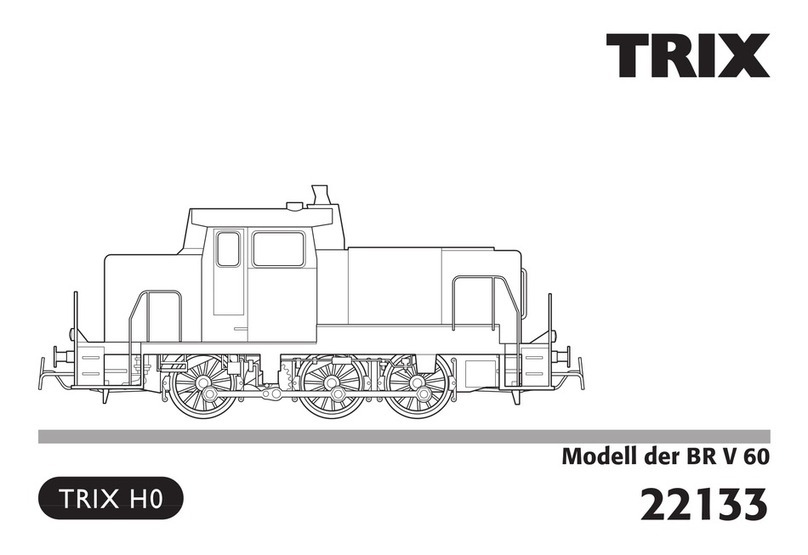
4
Informationen zum Vorbild
Ein stilles und arbeitsames Dasein im Schwabenland führten
lange Jahre die 18 Maschinen der Baureihe E 93. Dabei
wird leicht übersehen, dass die E 93 eine bahnbrechende
Neuentwicklung war, die speziell auf die Anforderungen der
ab 1. Juni 1933 elektrisch betriebenen württembergischen
Hauptbahn Stuttgart – Ulm ausgelegt war. Besonders die
Bewältigung der Geislinger Steige mit entsprechenden An-
hängelasten mussten ihre Konstrukteure berücksichtigen.
Die Baureihe E 93 stand meistens im Schatten ihrer größe-
ren Schwester, der E 94, die später im ganzen süddeutschen
Raum zu finden war.
Zu Unrecht, denn die E 93 war das erste „Deutsche Kroko-
dil“ und die Urahnin einer ganzen Generation von sechs-
achsigen, laufachsenlosen Elektroloks für den schweren
Güterzugdienst. Eine 50-jährige Einsatzzeit trotz ihrer eher
mäßigen Höchstgeschwindigkeit spricht für ihre robuste
Konstruktion und einfache Handhabung. Die meisten ihrer
modernen Schwestern können kaum auf ein so langes
Lokomotivleben zurückblicken.
1933 lieferte AEG die zwei ersten Exemplare als E 93 01 und
02 an das Bw Kornwestheim. Sie erfüllten voll und ganz
das vorgesehene Betriebsprogramm, das unter anderem
die Beförderung von 1.600-Tonnen-Zügen auf fünf Promille
Steigung mit einer Geschwindigkeit von 60 Kilometern pro
Stunde vorsah. Über die Geislinger Steige konnten mit
Schubloks noch 1.200 Tonnen befördert werden.
Erst 1935 folgten zwei weitere Maschinen (E 93 03 und 04).
Mit auf 70 Kilometer pro Stunde heraufgesetzter Höchstge-
schwindigkeit erschienen 1937/39 die E 93 05 bis 18, dann
trat die stärkere E 94 ihre Nachfolge an.
Information about the Prototype
The 18 machines of the E 93 class spent many years of their
quiet but industrious life in Swabia. It is easily forgotten that
the E 93 class represented a pioneering new development
specially designed to suit the demands of the Wurttemberg
main line between Stuttgart and Ulm, electrified from June
1st, 1933. Their designers had particularly to allow for nego-
tiation of the Geislingen Ramp while still hauling worthwhile
loads. The E 93 class was mostly overshadowed by its larger
sister, the E 94 class, which was later to be found all over
southern Germany.
This was unjustified, as the E 93 was the first “German
Crocodile” and the predecessor of an entire generation of
six-axle electric locos with no idler wheels for heavy freight
traffic. A 50-year service life despite their rather modest
maximum speed speaks volumes for their robust design
and their simplicity in operation. Few of their more modern
sisters will ever be able to look back over as long a service
life.
AEG delivered the first two examples, E 93 01 and 02, to the
Kornwestheim depot in 1933. They fulfilled every require-
ment of the draft operating program, which covered among
other things hauling 1,600-tonne trains up a 1 in 200 grade at
a steady speed of 60 km/h (37 mph). With pusher assistance,
even the Geislingen incline could be negotiated with 1,200
tonnes. Not until 1935 did the next two machines, E 93 03 and
04, appear. Machines E 93 05 to 93 18 followed in 1937/39,
now with a permitted top speed of 70 km/h (43-1/2 mph),
then they were succeeded by the more powerful E 94.

